
Industrial machinery company Parker-Hannifin (NYSE:PH) met Wall Street’s revenue expectations in Q1 CY2025, but sales fell by 2.2% year on year to $4.96 billion. Its non-GAAP profit of $6.94 per share was 3.3% above analysts’ consensus estimates.
Is now the time to buy Parker-Hannifin? Find out by accessing our full research report, it’s free.
Parker-Hannifin (PH) Q1 CY2025 Highlights:
- Revenue: $4.96 billion vs analyst estimates of $4.98 billion (2.2% year-on-year decline, in line)
- Adjusted EPS: $6.94 vs analyst estimates of $6.72 (3.3% beat)
- Management slightly raised its full-year Adjusted EPS guidance to $26.70 at the midpoint
- Free Cash Flow Margin: 10.9%, down from 14.1% in the same quarter last year
- Organic Revenue rose 1% year on year, in line with the same quarter last year
- Market Capitalization: $77.91 billion
“Our third quarter performance demonstrates the strength of our business and our global team’s ability to continue to deliver record results,” said Jenny Parmentier, Chairman and Chief Executive Officer.
Company Overview
Founded in 1917, Parker Hannifin (NYSE:PH) is a manufacturer of motion and control systems for a wide variety of mobile, industrial and aerospace markets.
Sales Growth
Examining a company’s long-term performance can provide clues about its quality. Even a bad business can shine for one or two quarters, but a top-tier one grows for years. Regrettably, Parker-Hannifin’s sales grew at a mediocre 6.8% compounded annual growth rate over the last five years. This wasn’t a great result compared to the rest of the industrials sector, but there are still things to like about Parker-Hannifin.
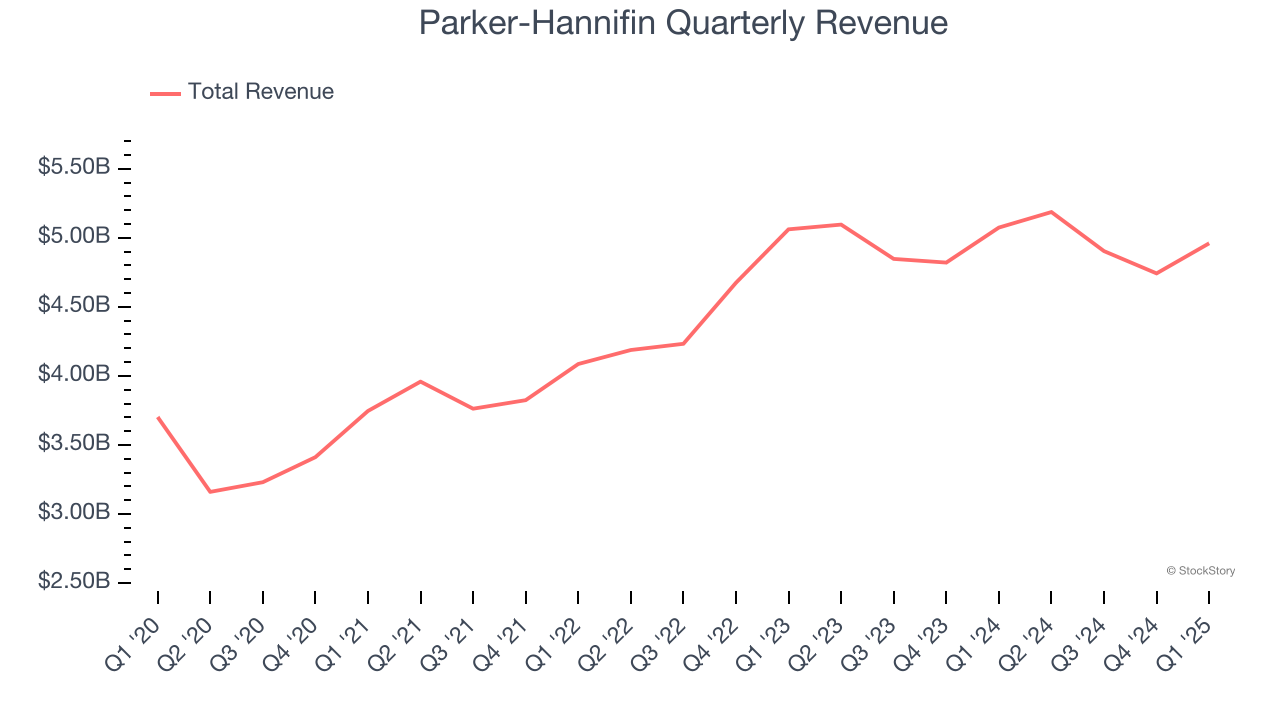
Long-term growth is the most important, but within industrials, a half-decade historical view may miss new industry trends or demand cycles. Parker-Hannifin’s recent performance shows its demand has slowed as its annualized revenue growth of 4.4% over the last two years was below its five-year trend. 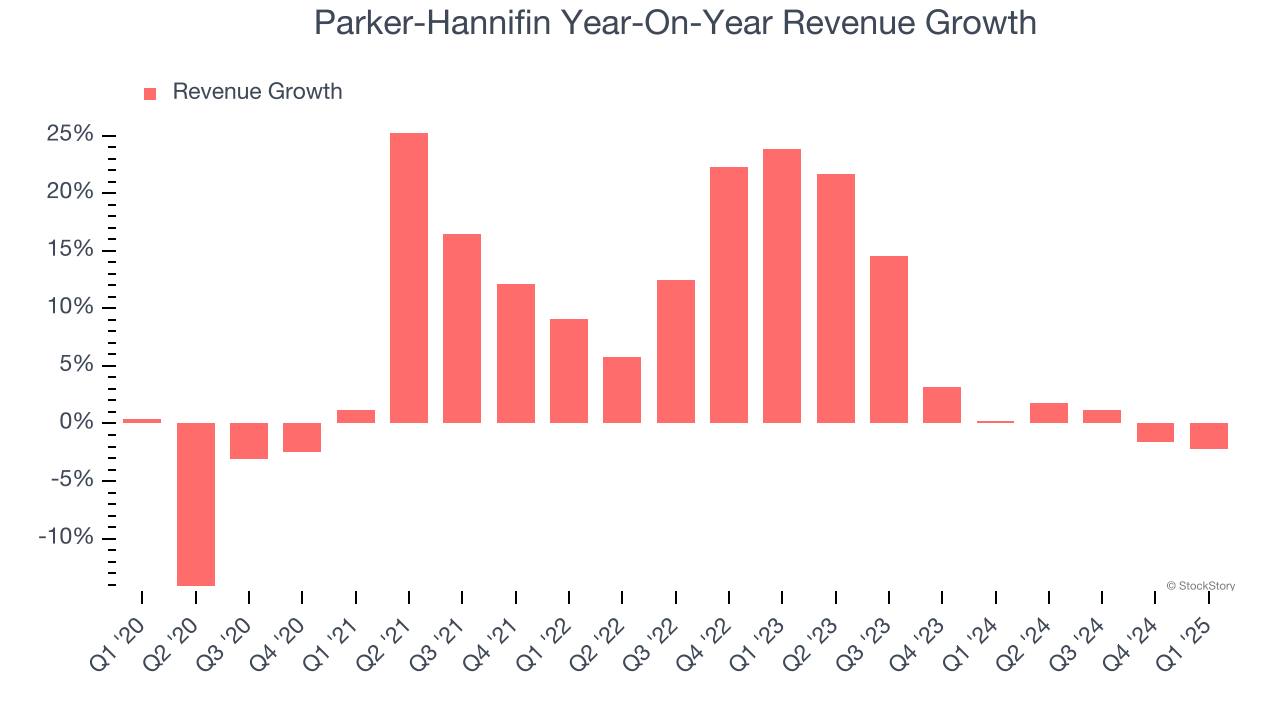
We can better understand the company’s sales dynamics by analyzing its organic revenue, which strips out one-time events like acquisitions and currency fluctuations that don’t accurately reflect its fundamentals. Over the last two years, Parker-Hannifin’s organic revenue averaged 2.3% year-on-year growth. Because this number is lower than its normal revenue growth, we can see that some mixture of acquisitions and foreign exchange rates boosted its headline results. 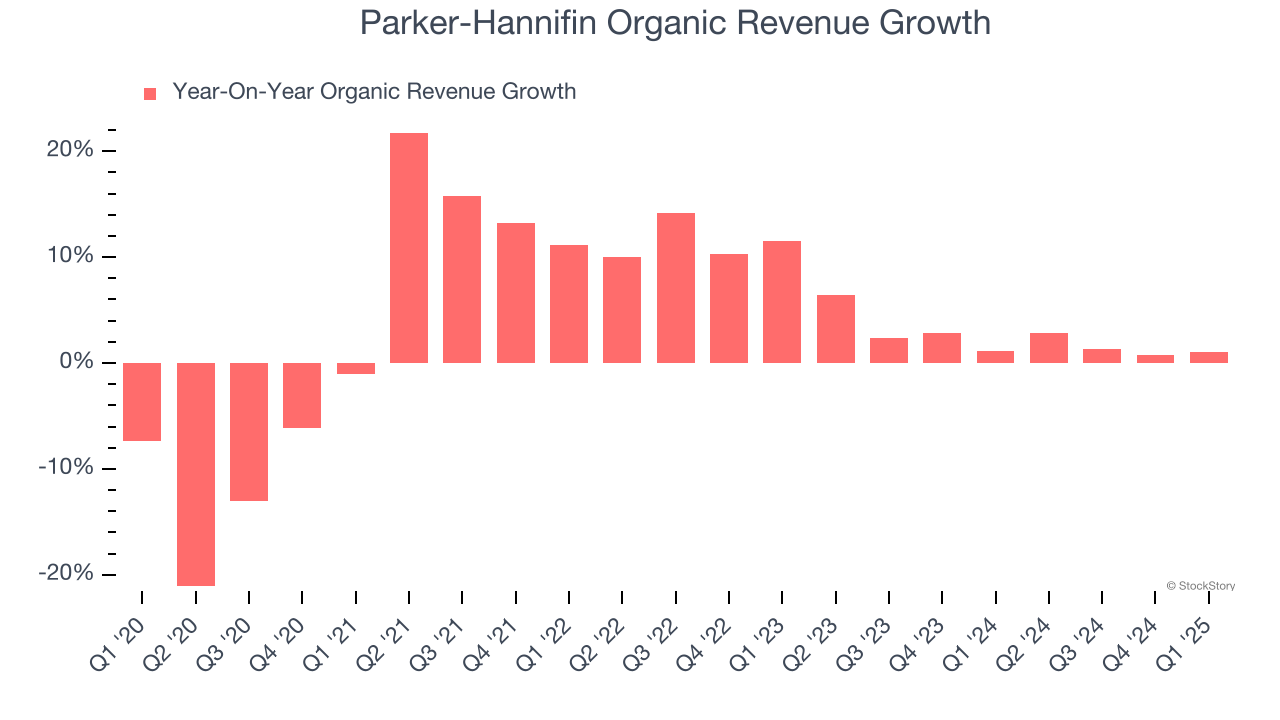
This quarter, Parker-Hannifin reported a rather uninspiring 2.2% year-on-year revenue decline to $4.96 billion of revenue, in line with Wall Street’s estimates.
Looking ahead, sell-side analysts expect revenue to grow 2.9% over the next 12 months, a slight deceleration versus the last two years. This projection doesn't excite us and suggests its products and services will face some demand challenges. At least the company is tracking well in other measures of financial health.
Unless you’ve been living under a rock, it should be obvious by now that generative AI is going to have a huge impact on how large corporations do business. While Nvidia and AMD are trading close to all-time highs, we prefer a lesser-known (but still profitable) stock benefiting from the rise of AI. Click here to access our free report one of our favorites growth stories.
Operating Margin
Operating margin is one of the best measures of profitability because it tells us how much money a company takes home after procuring and manufacturing its products, marketing and selling those products, and most importantly, keeping them relevant through research and development.
Parker-Hannifin has been a well-oiled machine over the last five years. It demonstrated elite profitability for an industrials business, boasting an average operating margin of 17.4%. This result isn’t too surprising as its gross margin gives it a favorable starting point.
Analyzing the trend in its profitability, Parker-Hannifin’s operating margin rose by 5 percentage points over the last five years, as its sales growth gave it operating leverage.
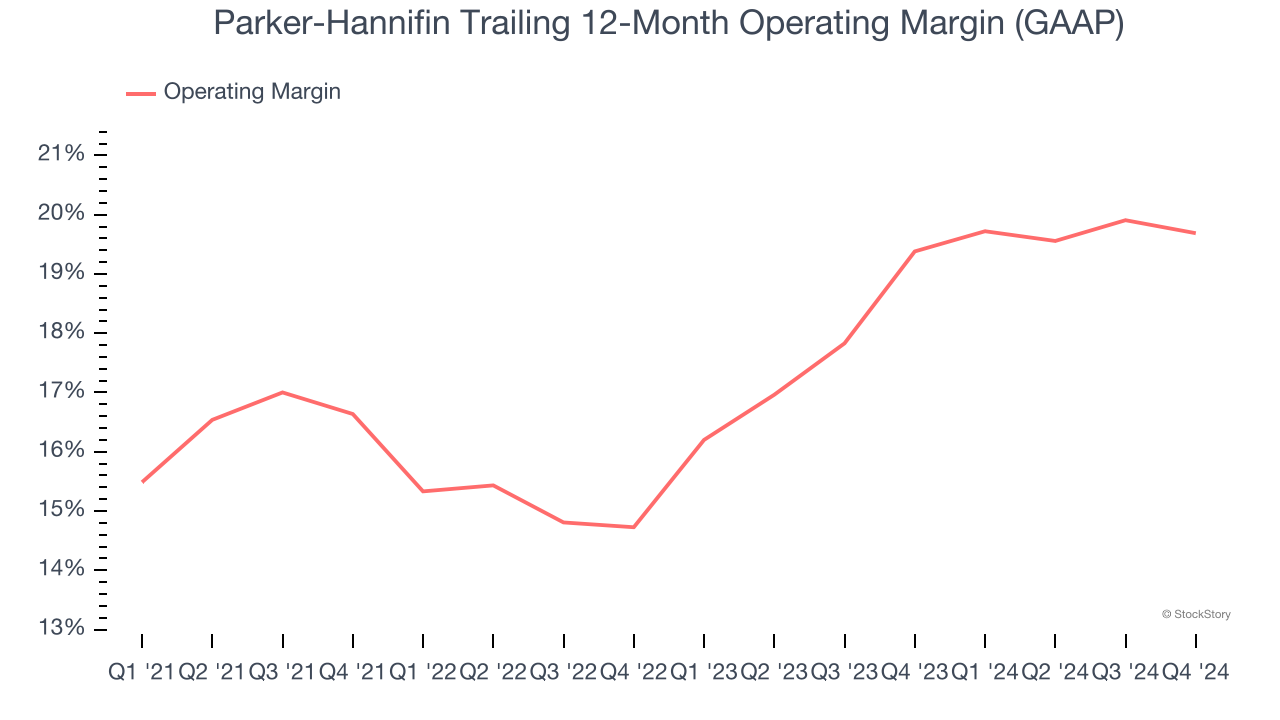
Earnings Per Share
We track the long-term change in earnings per share (EPS) for the same reason as long-term revenue growth. Compared to revenue, however, EPS highlights whether a company’s growth is profitable.
Parker-Hannifin’s EPS grew at a spectacular 15.7% compounded annual growth rate over the last five years, higher than its 6.8% annualized revenue growth. This tells us the company became more profitable on a per-share basis as it expanded.
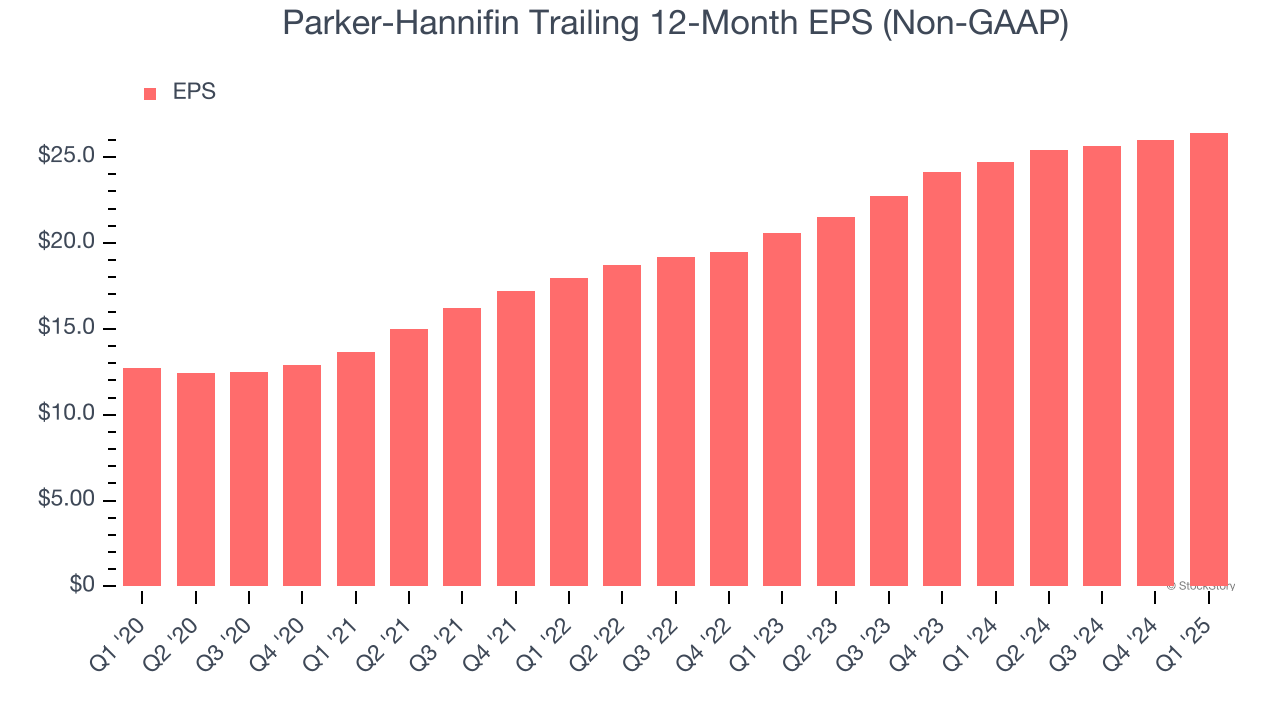
We can take a deeper look into Parker-Hannifin’s earnings to better understand the drivers of its performance. As we mentioned earlier, Parker-Hannifin’s operating margin expanded by 5 percentage points over the last five years. This was the most relevant factor (aside from the revenue impact) behind its higher earnings; taxes and interest expenses can also affect EPS but don’t tell us as much about a company’s fundamentals.
Like with revenue, we analyze EPS over a more recent period because it can provide insight into an emerging theme or development for the business.
For Parker-Hannifin, its two-year annual EPS growth of 13.3% was lower than its five-year trend. We still think its growth was good and hope it can accelerate in the future.
In Q1, Parker-Hannifin reported EPS at $6.94, up from $6.51 in the same quarter last year. This print beat analysts’ estimates by 3.3%. Over the next 12 months, Wall Street expects Parker-Hannifin’s full-year EPS of $26.43 to grow 7.6%.
Key Takeaways from Parker-Hannifin’s Q1 Results
Revenue was in line despite an organic revenue miss. EPS managed to beat, and the company slightly raised full-year EPS guidance. Overall, this was a decent quarter. The stock traded up 1.6% to $613.87 immediately after reporting.
So do we think Parker-Hannifin is an attractive buy at the current price? The latest quarter does matter, but not nearly as much as longer-term fundamentals and valuation, when deciding if the stock is a buy. We cover that in our actionable full research report which you can read here, it’s free.
